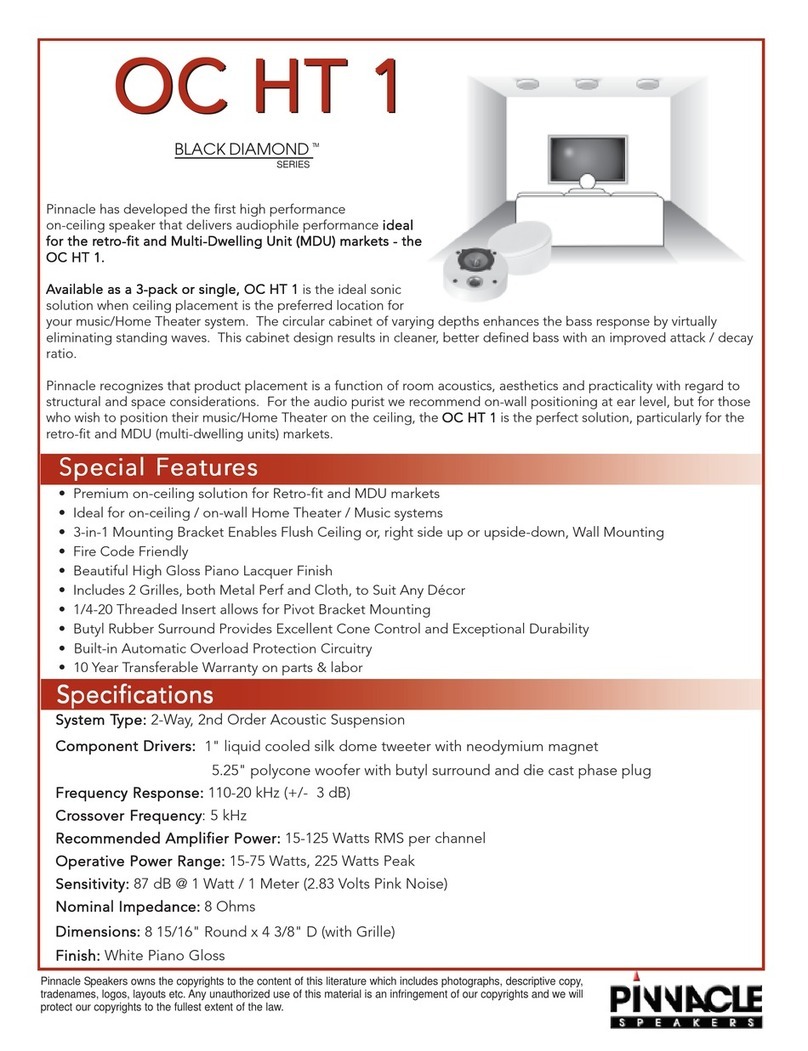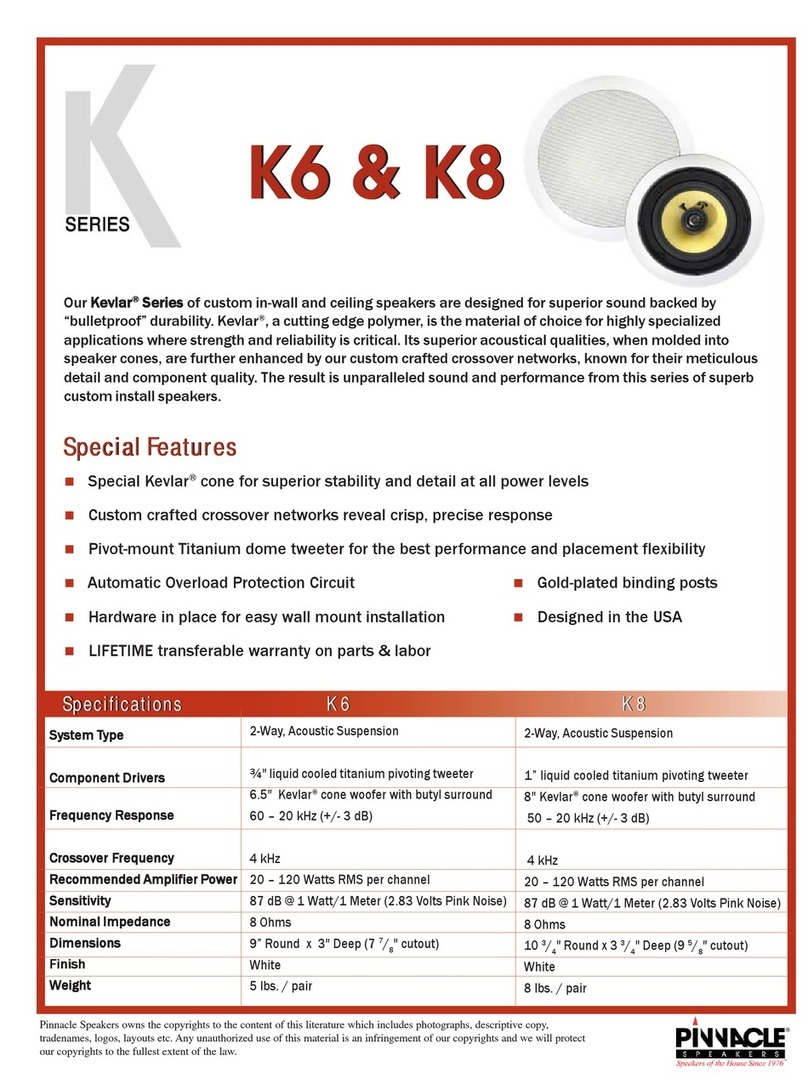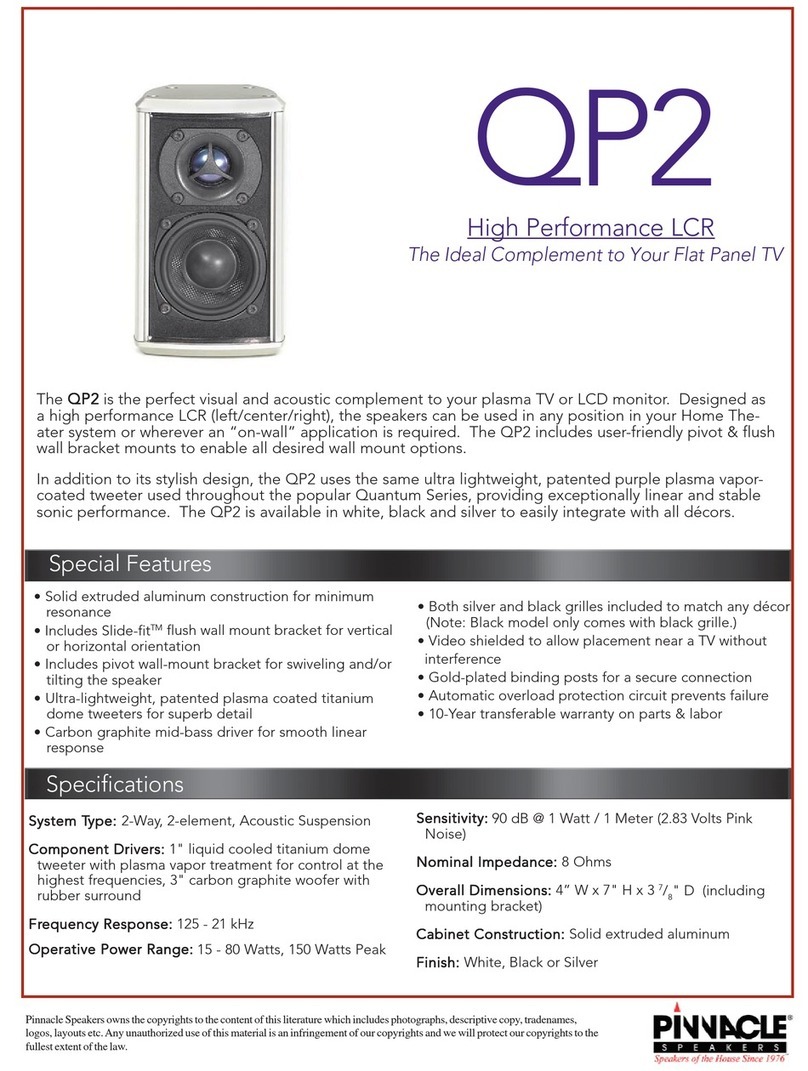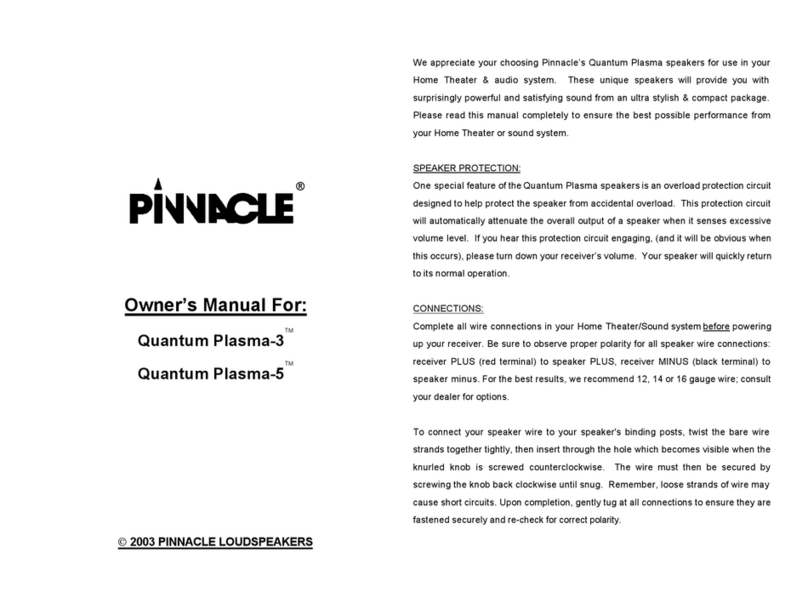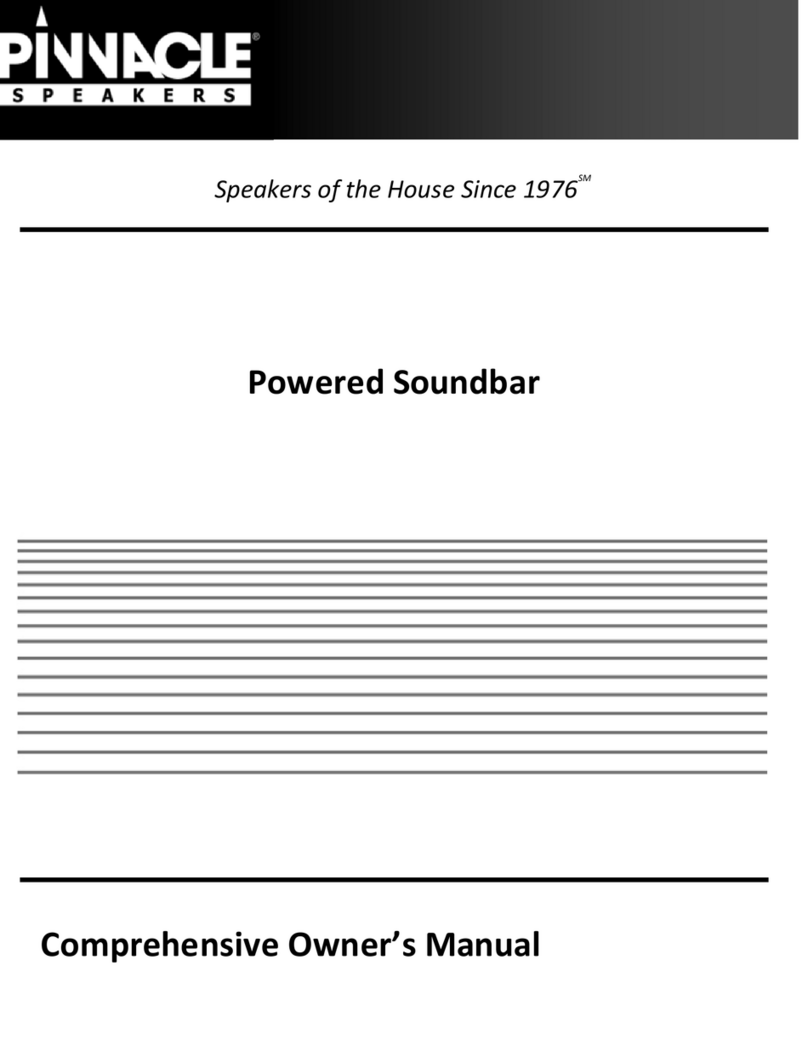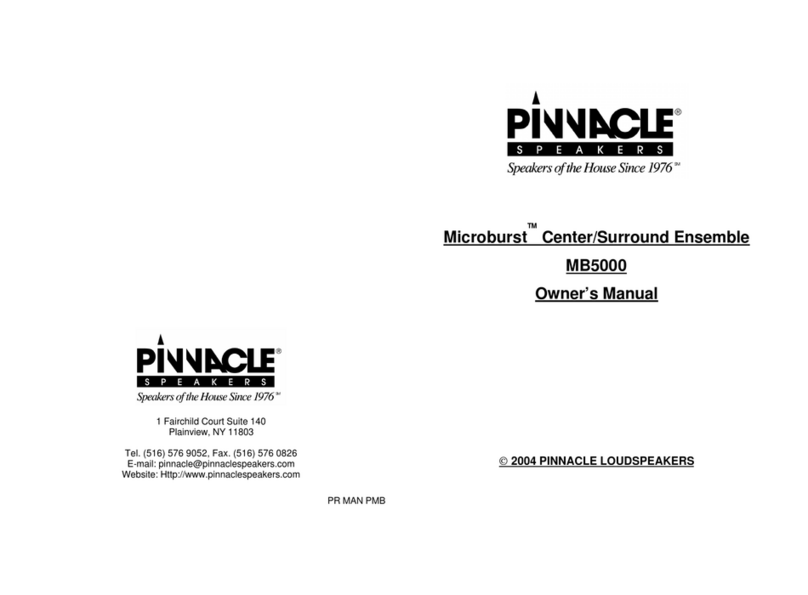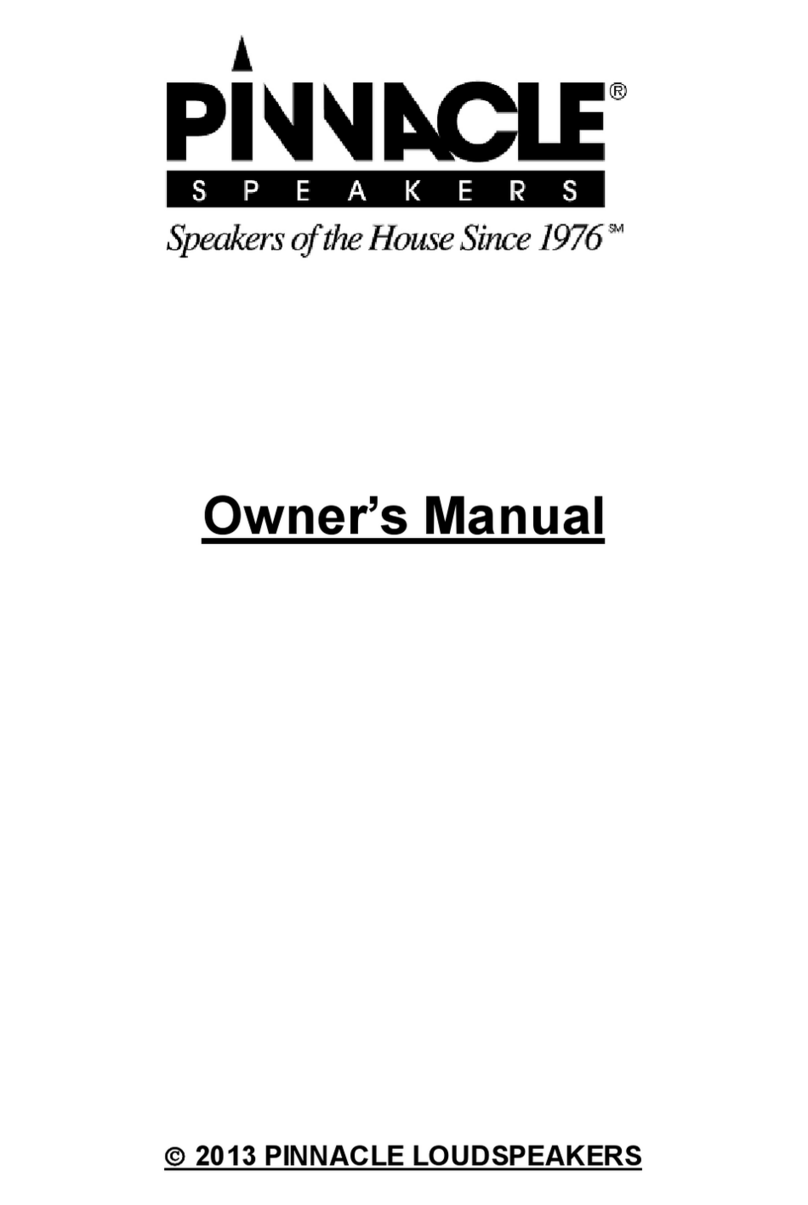D) Use equalization boost (↑) with caution to avoid overload;reduction (↓) can be
used freely as desired.
IF YOUR SPEAKER COMES WITH RUBBER FEET:
To prevent the speaker cabinet from vibrating and/or moving, please attach the four
rubber feet to the bottom of your speaker's cabinet near the corners.
IF YOUR SPEAKER COMES WITH SOLID BRASS ISOLATION CONES:
With the speaker lying down, simply screw the cones into their receptacles on the
bottom of the cabinet. Then, with the speaker standing, adjust the cones individually
as needed to level the cabinet. If you intend to place your speakers on wooden or
vinyl floors, we suggest placing a penny under each cone to prevent any indentations.
THE LISTENING ROOM ENVIRONMENT
The overall performance of any speaker system is significantly affected by the
acoustical properties of the listening environment. A well balanced soundroom is one
that is neither square nor extremely long and narrow. Non-parallel walls and high or
vaulted ceilings are usually beneficial, though by no means vital. In most cases you will
not have a choice of soundrooms, but you may have some control over other aspects of
the acoustical environment.
A mixture of some hard (reflective) with mostly soft (absorbent) surfaces is very
desirable. Combinations of carpeting, wall paneling, padded furniture, brick and other
contrasting surfaces provide excellent results. Acoustical ceiling tile is also usually
beneficial. The larger the listening area, the more power is required to maintain high
volume levels with low distortion. Therefore, a moderately powered amplifier or receiver
will function best in a small room. Higher power is required for areas containing many
soft or padded surfaces such as sofas, pillows, thick carpets, heavy drapes, etc. These
surfaces absorb much sound energy and promote a "dry" sound character, crisp and
highly detailed. In a room with mostly hard surfaces and high ceilings, speakers will
produce a more blended or "live" sound and will probably seem less power hungry
because of the great amount of room reflections. This type of environment may require
treble equalization (reduction) and for Home Theater applications, minimal time delay
mode settings to reduce the tendency towards "muddying" up the sound.
ROOM PLACEMENT
Different room positions will significantly affect your speakers overall performance.
There are therefore, several factors to consider when determining the best speaker
location. Speakers of small physical size are typically referred to as "bookshelf"
speakers because they have been designed to perform optimally when placed on a
shelf or stand that is raised off the floor. Speakers of larger size typically handle greater
amounts of power and have been designed to perform optimally when placed on the
floor or raised slightly off the floor by speaker stands or decoupling devices such as
Pinnacle's Solid Brass Isolation Cones.
SEPARATION
Always be sure to provide ample separation between the main speakers. Usually 6 to 12
feet is adequate as greater distances might result in a "hole in the middle" effect. The
best distance between the main speakers is also dependent upon room conditions, size,
and the proximity of the listening area to the speakers. A bit of experimentation is in
order, but smaller rooms will better tolerate closer spacing.
SOUND QUALITY(see Figure 2)
The following points are noteworthy when choosing the best room location for your
speakers:
A) Sound quality is generally improved when all or most of the floor space is carpeted
(whether or not floor placement is selected).
B) The more surfaces of the room that are adjacent to a speaker, the greater its bass
output will be. Drastic differences in sound quality are commonplace when various
speaker positions are experimented with.
C) Maximum bass is obtained in a corner location. That is often not desirable because
the sound may be too heavy. Full size speakers with naturally powerful bass response
should generally be kept away from corners. If they must be placed in the vicinity of
corners because of room constraints, tone controls or equalizers can be employed to
satisfactorily curtail excessive room output. Certain small surround speakers, though
may be designed to benefit most from corner placement.
D) Speakers may be hung from a ceiling or walls if sufficient structural support is
available for the weight of the speaker. If the ceiling is high, angle the speakers
downward to create a wide and powerful soundfield. The closer the woofer is to the
ceiling and walls, the stronger the bass will be. Certain models contain special brackets
to accommodate wall mounting.
E) The best overall imagery (characterized by lifelike, spacious sonic qualities) is
achieved by locating the speakers as far from the walls and corners as possible, while
still maintaining adequate separation between them. Bass will be less prominent, but the
sonic character will be more detailed.
F) Unless the room is very narrow, the best positions will most likely be along the long
wall of the room, facing outward toward the listening area and angled in slightly toward
the center.



